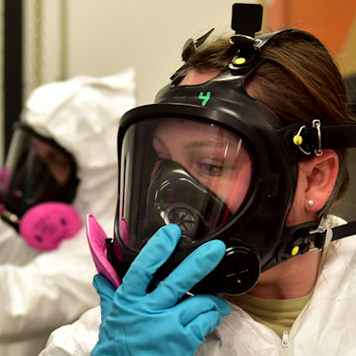Inspection Requirements
Respiratory protection is no better than the respirator in use, even though it is worn correctly.
Frequent random inspections must be conducted by a qualified individual to make sure respirators are properly selected, used, cleaned, and maintained.
Inspections must include a check of respirator function, tightness of connections, and the condition of the various parts. Below is a list of important points to remember when inspecting respirators.
Respirator Maintenance
- inspect respirators before each use and during cleaning;
- replace any worn or deteriorated parts;
- inspect SCBAs for emergency use at least once a month and after each use;
- the program administrator should keep a record of respirator inspections. Records should include dates, serial numbers, findings, any remedial action;
- air and oxygen cylinders are fully charged. They should be recharged if pressure falls to 90%;
- the regulator and warning devices function properly;
- check the tightness of connections and the condition of the facepiece, headbands, valves, connecting tube, and canisters;
- inspect rubber or elastomer (elastic rubber) parts for pliability and signs of deterioration; and
- stretch and manipulate rubber or elastomer parts with a massaging action to keep them pliable and flexible and prevent them from taking a set during storage.
Knowledge Check Choose the best answer for the question.
3-7. It is important to inspect respirator elastomeric parts for _____.
You forgot to answer the question!

